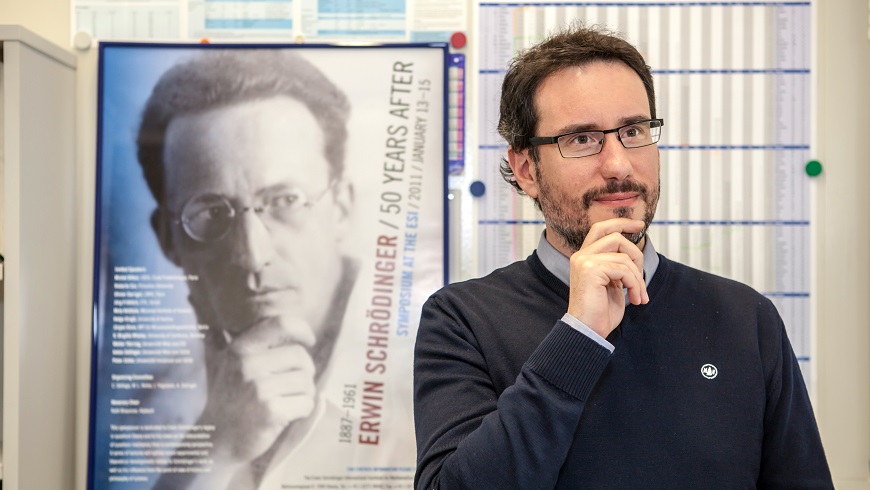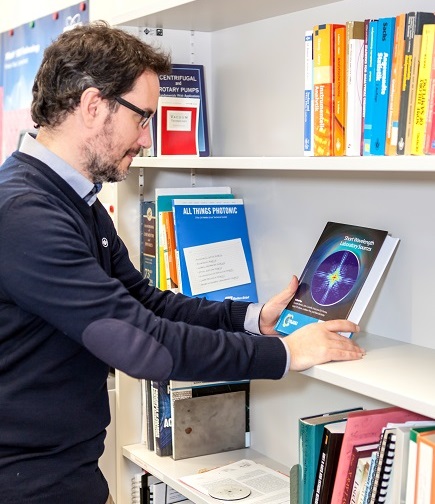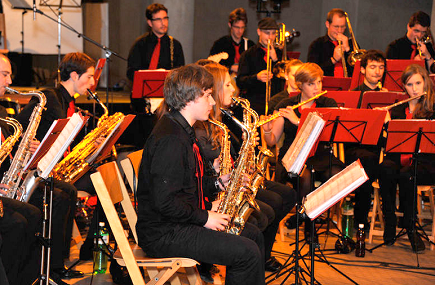David Bleiner
The beaming Italian

Most labs at Empa conduct research into new materials. My lab, on the other hand, develops new measuring methods to observe chemical processes during the application of these materials.” Davide Bleiner has ambitious plans, including for his laboratory, which he renamed “Advanced Analytical Technologies” (from “Analytical Chemistry”). While laser beams were regarded as playthings for atomic physicists half a century ago, they have become an integral part of everyday life. Bleiner’s laboratory works with analytics, which enables even the minutest of parts and concentrations – such as trace levels on a nanoscale – to be quantified. While “normal” X-ray sources, such as in the medical sector, act like a lamp and beams of “white light” radiate in all directions, “colorful” lasers are able to concentrate the beams, focus them on one point energy-selectively and thus illuminate tiny things. The latest developments in laser spectroscopy enable ultra-rapid processes to be observed in real time (“femtochemistry”). Researchers from Bleiner’s laboratory establish these advanced technologies at Empa with a view to specific issues of materials science – such as analyzing combustion processes in engines or the catalytic conversion of hydrogen with CO2 into hydrocarbons.
A foosball-sized particle accelerator

From the Stone Age to the 21st century
After his doctorate at ETH Zurich, a position as a project leader at Empa and a two-year stint as a postdoc at the University of Antwerp, where he studied the fundamentals of laser plasma and computer simulations, he returned to Switzerland to take up a post at ETH Zurich – but in mechanical engineering, not chemistry. “An unusual move,” concedes Bleiner, “but then laser expertise is called for in virtually every field.” He teamed up with engineers to develop a laser-powered source of extreme ultraviolet radiation for use in next-generation lithography. “The engineers were grateful for my laser expertise and it was rewarding for me as I was working in an environment – namely fluid mechanics – where I still had plenty to learn.” According to Bleiner, that’s the advantage of switching fields every now and again: “I frequently felt like Forrest Gump in life and found myself in situations without really understanding how I’d got there, but something good always came out of it in the end.”
At ETH Zurich, this included topics such as fluid mechanics and turbines – knowledge that he can now put to good use on a current project at Empa. In conjunction with SR Technics and the Federal Office of Civil Aviation (FOCA), his team developed a measuring technique that is able to gage the fine particle emissions of airline turbines directly, recording even the minutest of particles that are less than a hundred thousandth of a millimeter in size – i.e. less than ten nanometers. (Read more about this project on page 4.)
The book smuggler

Bleiner is no stranger to airports, either. Once, his love of travel and physics books even landed him in the soup at Zurich Airport. The customs officials mistook him for a book smuggler when he tried to stroll through customs with a suitcase crammed full of books. He ended up getting slapped with a fine – after all, how could he prove that he was bringing all these books on quantum mechanics across the border for personal use as opposed to trafficking them? He has another passion, too: calcio (football to non-Italians). Although he has hung up his boots as a player, he remains a fan of AS Roma – one of the clubs in his hometown.
That said, he now calls Switzerland his new home. He likes it here and people don’t immediately cotton on that he isn’t actually Swiss. “Most assume I’m from Ticino.” And Bleiner has another fitting anecdote at the ready. Back when he was a PhD student at Empa, someone recommended “going abroad for a few years” because it looks great on your résumé. To which he replied: “But I already am abroad!” Nonetheless, he heeded the advice and worked, among other places, in Belgium, the USA and Italy before eventually returning to Switzerland.Switzerland: an ideal place for research
He is a prime example of this himself. When he joined Empa after his doctorate more than a decade ago, he underestimated the research environment at Empa. During his stints abroad, however, one thing in particular dawned on him: in Switzerland and especially at Empa, researchers have it cushy, but most of them – like him back in the day – don’t even realize it. He still recalls from his time at the renowned Lawrence Berkeley National Laboratory in the US how five researchers would share an office that was half the size of his present one at Empa – without any windows and just a clapped-out old fan in California’s summer heat; conditions that would be unthinkable in Switzerland.
If at first you don’t succeed…
As a laboratory head, Bleiner no longer works on the analysis equipment or in the lab as often as he used to – not that this is a problem for him. “Eventually, every football player has to trade in his boots for the dugout,” he says. These days, he is more interested in helping budding young scientists. Soon he will be following in the footsteps of his great role model Erwin Schrödinger when he takes up a professorship at the University of Zurich. At Empa, he supervises his PhD students’ projects and, in doing so, keeps seeing new challenges – especially in complicated cases. “When someone says it’s too hard, those are the projects that inspire me the most.”
Of course, he doesn’t advocate that his PhD students should only produce one string of failures after the other for three years. But they stand a far greater chance of stumbling across exciting new findings if things do go wrong every now and then. “If you carry out an experiment and the result is exactly as you’d expected, that isn’t research; that’s an internship. If the results are surprising, however, things start to get interesting!” Bleiner’s own career has been littered with unexpected twists and turns – but that’s a good thing, he insists. “Life is like the movies, not a book. When you read, you can skip to the end and sneak a peek. You can’t do that at the cinema. But somehow it always works out.”Cornelia Zogg
Communication
+41 58 765 4599
-
Share
